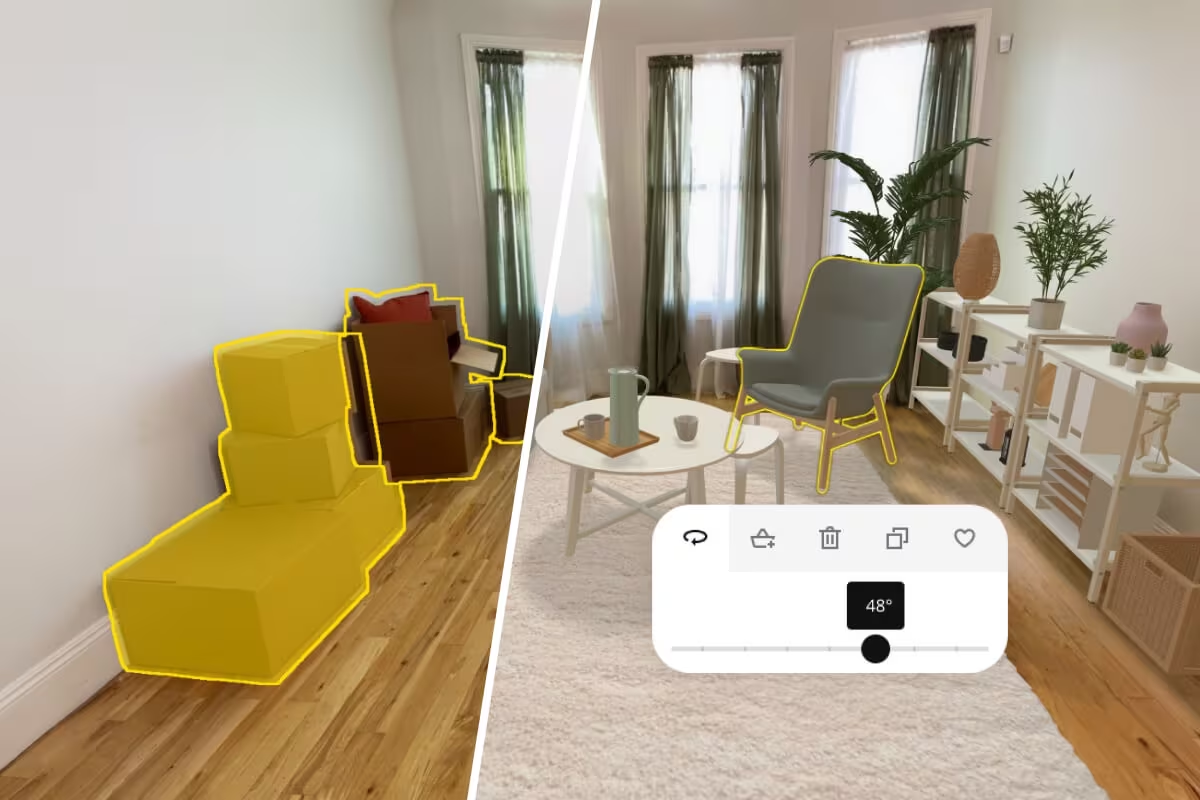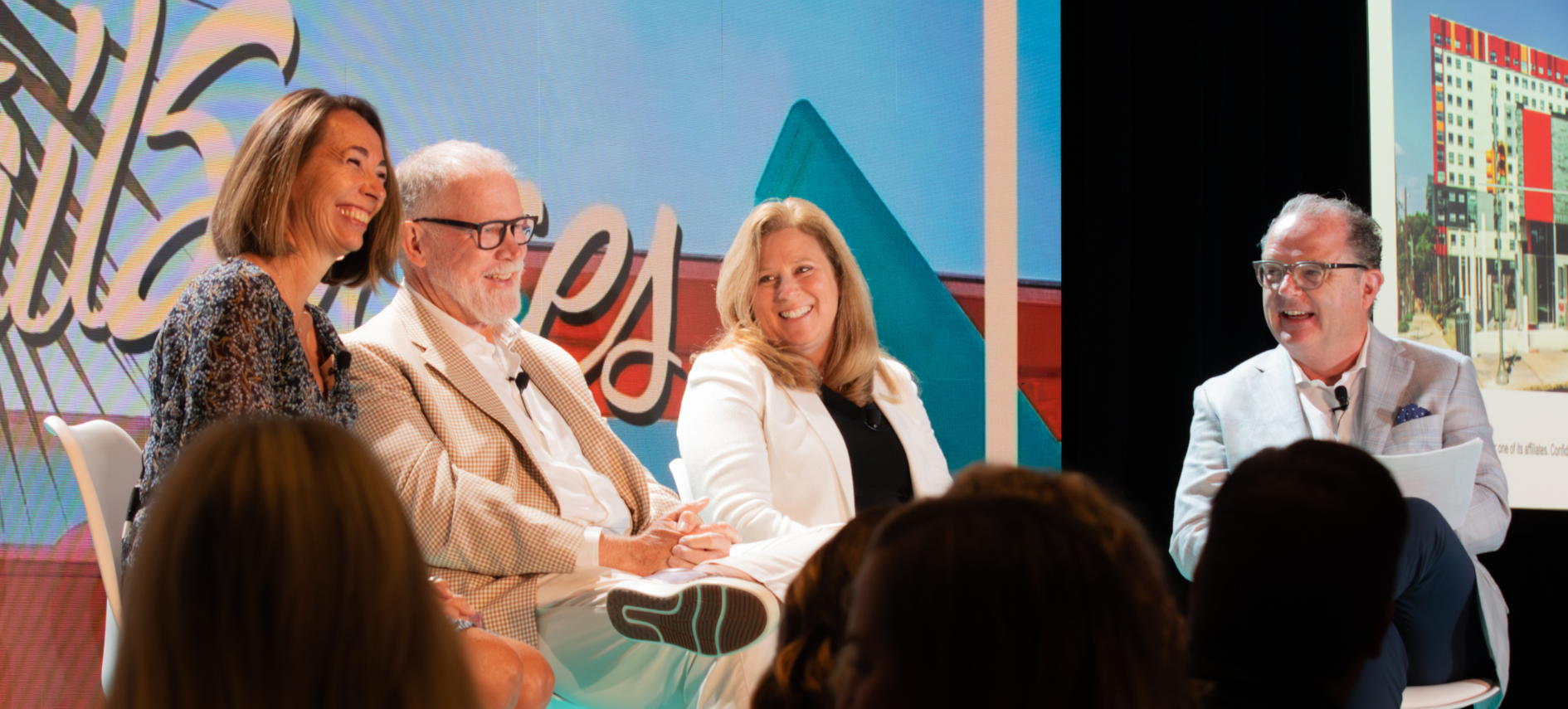Rob Olson didn’t plan on going into retail. When he started in the industry, it was with a job at Walmart that he took to pay for college. Originally hoping to become an accountant, he quickly discovered that the accounting life wasn’t for him.
“I just couldn’t sit at a desk and do that,” he said at RetailSpaces in Austin, Texas. “But then I got into retail and just fell in love.”
In a presentation and then a conversation with RetailSpaces producer Jason Schwab, Olson not only reflected on the journey that brought him from Walmart to Sportmart to IKEA—where he’s spent close to two decades and currently serves as Chief Operating Officer for the US—he also discussed IKEA’s new small-format locations, its sustainability initiatives, and why he believes the Swedish retailer’s iconic in-store experience will continue to attract customers in the digital age.
Smaller Stores, Bigger Market Penetration
Like other retail giants, IKEA has lately begun exploring the potential of smaller-format stores. As Olson explained, the company’s average big box location is around 300,000 square feet, with some reaching as high as 450,000 square feet.
“There are only so many markets we can enter, and only so many of those we can put in each market,” he said. “We've been looking at a lot more solutions, right around 100,000 square feet, that can bring additional locations to existing markets, but also get us into cities that we haven't been able to penetrate before.”
The strategy doesn’t stop there. IKEA’s new “Plan and Order Points” are even humbler locations in suburban and smaller markets—some as compact as 1,000 square feet—specifically devoted to “kitchen, bedroom, and living room planning,” with experts on hand to advise customers about their home furnishing needs.
 The new service-centric Plan and Order Points will be a key component of IKEA's growth strategy
The new service-centric Plan and Order Points will be a key component of IKEA's growth strategy
“They also have a pickup location attached, so you can still order the full range of goods online or in the store, and then come pick it up tomorrow or the next day,” Olson explained. “This is one avenue that we see really getting us closer to the consumer in many different markets.”
Another prong in IKEA’s efforts to expand its reach is what Olson described as its Final Mile services. First, there’s its acquisition of TaskRabbit, giving customers a range of home assembly and installation options, from putting together furniture to mounting frames. Then there’s Ikea Home Services, which specifically focuses on planning and installing kitchens, and IKEA Kreativ, its in-app augmented reality tool that helps customers design their own spaces.
“You can take a photo of your living room, take your sofa out, put a new sofa in, take out your TV solution, put a new TV solution in, and see how it'll look in your home,” Olson said. “The customer doesn't have to leave the house.”
 Big investments in tech like augmented reality are helping IKEA enhance its Final Mile services
Big investments in tech like augmented reality are helping IKEA enhance its Final Mile services
Investing in Sustainability
IKEA’s focus on smaller stores ties into its sustainability efforts, which encompass a broad range of initiatives. The company has invested billions in renewable energy solutions over the last decade, including several wind and solar farms it owns across the US. In 2019, it launched the One Home, One Planet summit, which brings together experts across various industries to brainstorm solutions to the climate crisis, like clean construction and affordable housing.
“As we dig into sustainability, the smartest move we made is to realize that we're not smart enough,” Olson said. “We don't have all the answers ourselves.”
In addition to its investment in offsite renewables, IKEA continues to make heavy investments in onsite solutions. More than 90 percent of its locations have rooftop and/or carport solar arrays, and it’s in the midst of converting nonrenewable heating and cooling systems to renewable ones across the entire US. Even today, some locations produce more electricity than they use.
Other efforts include the (gradual) conversion of delivery vehicles to 100 percent electric; the adoption of AI building management technologies to help modulate energy usage based on weather, traffic flow, and other factors; and the Buyback & Resell program, which helps reduce waste while offering customers more affordable secondhand products. This latter initiative also helps the retailer achieve another of its aims — making furniture and home goods more affordable to the public.
 Solar panel arrays are currently in place at more than 90 percent of locations across the U.S.
Solar panel arrays are currently in place at more than 90 percent of locations across the U.S.
Sustainability is baked into IKEA’s growth strategy, Olson added, predicting that the majority of its US expansion will be smaller-format stores and that, when possible, IKEA prefers to adapt existing big box locations rather than build new ones from the ground up.
“The cleanest construction is none,” he said. “If we're able to take an existing JCPenney, Sears, or whatever location and reuse it, it is much more sustainable. Even if we go in without the renewable heating and cooling, or without the photovoltaic solution, it is a much more sustainable solution because we didn't have to build from the ground up.”
The Long Natural Way
As consumers increasingly shop online, IKEA is razor-focused on ensuring that its customers still have good reasons to come to the store—and it’s trying some unique approaches.
One of its more novel initiatives is the bingo nights it hosts at its locations, with as many as 170 people regularly coming out to its Paramus, New Jersey store to play games and enjoy IKEA’s best-selling food items, like its new vegetarian hot dog. Other programs include garage sale-esque events at its receiving docks and even in-person seminars about various topics, like how to set the table for a holiday dinner.
When asked how he envisions the traditional IKEA experience in 20 to 30 years' time—an outing that has long been iconic among shoppers everywhere—Olson believes there will always be a place for the Blue Box. Indeed, IKEA’s own research indicates that 75 percent of customers who buy a sofa online first come to the store to sit in it. He’s also a firm believer in the maze-like experience of IKEA’s stores, which the company prefers to describe as the “long natural way.” It’s not about greedily driving add-on sales, but about giving the customer the best possible in-store experience—ensuring, for instance, that they don’t buy the sofa without the pillow or the blanket.
“It allows the customer to experience the totality and make sure that they get a complete solution when they leave,” Olson said. “It is really about helping create that full solution. I think it'll still be here down the road.”

Posted by
Physical Retail Reimagined.
RetailSpaces is a community for store development and design innovators.
March 29-31, 2026 | San Antonio, TX
Learn More!
-1.png)







Comments